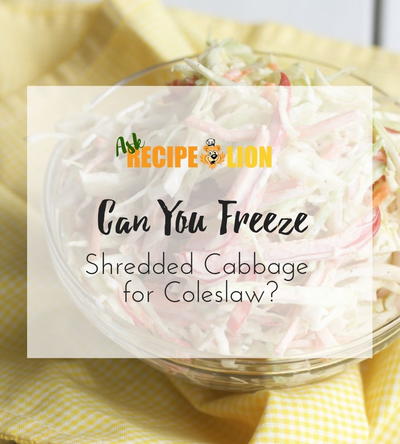Guide to Ground Beef: How to Buy, Store, and Cook Beef
Learn the different cuts of beef, how to decode a label, and much more.
Ground beef is one of the most popular meats to cook with and is a staple of many American comfort food recipes.
But what do you really know about it?
We've created this Guide to Ground Beef How to Buy, Store, and Cook Beef to help you learn all there is to know about ground beef.
Navigating the beef aisle at the grocery store can be overwhelming for even the most experienced shopper. We've laid out a guide to meat-to-fat ratios, common cuts of beef, and how to decode meat labels. Plus, you'll learn different ways to defrost and brown ground beef all while staying safe in the kitchen.
If you love ground beef as much as we do at AllFreeCasseroleRecipes, you'll want to keep this information handy.
Is there a difference between ground beef and hamburger?
Yes, there is. However, in the United States, “ground beef” and “hamburger” are often used interchangeably. And in fact, there are some legal similarities between the two:
+ Neither is allowed to have more than 30 percent fat.
+ Neither can include: added water, phosphates, extenders, or binders.
The main difference is the source of the fat content.
In order to be labeled “ground beef,” the fat content has to come naturally from the meat’s trimmings – no additional fat can be added. For example, the fat content in ground sirloin can only come from the trimmings of sirloin.
In contrast, "hamburger" can contain additional fat trimmings so long as the fat content doesn’t exceed 30 percent. Fat can be added to a mixture of lean meat in order to control the fat percentage.
How to Buy Ground Beef

- Look at the color – It should be bright pink or red with flecks of white (the fat). Visible pieces of meat are also a good indicator that the meat hasn’t been over ground.
- Check the sell-by date – Even though sell by dates are not required by the United States Department of Agriculture (USDA), they are still helpful guidelines for sellers and consumers. Consider this date after you’ve checked the color of the beef.
- It should be the last item you buy – Since ground meat is very perishable, it is best to pick it up just before you check out at the store. This will ensure that it goes unrefrigerated for a short time.
Meat-to-Fat Ratio
The meat-to-fat ratio refers to the percentage of meat and fat in any given blend of ground beef. Below are the most common ratios.
* 95/5 - May be labeled as "Extra Lean"
* 90/10 - May be labeled as "Lean"
* 85/15
* 80/20
* 70/30
Lean – In order to be labeled “lean” it must have less than 10 percent fat.
Extra Lean – To be labeled “extra lean” it must have less than 5 percent fat.
More Tips for Selecting Ground Beef
- To find the leanest ground beef, look for meat that is redder in color because the fat is white. (Fat can make ground meat look pinkish.)
- Going for the cheaper ground beef (higher fat content) won’t necessarily save you money. This is because beef with a higher fat content will shrink more as it cooks. So, even if you paid more for a pound of 90/10 meat, you actually get more meat than you would if you bought the cheaper 80/20 meat.
Common Beef Cuts

While any cut of beef can be ground, these are the most three most common cuts that are used to make ground beef.
Chuck – A great go-to cut of beef because it has a good blend of meat and fat. This cut comes from the shoulder, which is also known as the chuck. Because of the meat to fat ratio, it is usually the most flavorful.
Round – Flavorful and lean. This cut comes from the hindquarters, which is also known as the round. It is slightly less flavorful than chuck, but has a lower fat content.
Sirloin – Has a very beefy, rich flavor and is fairly lean. This cut comes from the rear back portion. It is generally the healthiest choice, but can be dry because it has less fat. It is also one of the most expensive types of ground beef.
Decoding Meat Labels
In the United States, the Agricultural Marketing Service (AMS) is an agency within the U.S. Department of Agriculture. Aside from overseeing basic standards of meat quality, the AMS regulates additional certifications that meat producers can choose to participate in. This is called the Process Verified Program.
While there are many more terms to be found on meat labels, these are the most common and meaningful ones.

USDA Process Verified Labels
+ Organic – This certification is one of the more difficult ones to get, because it has to follow strict rules and pass regular inspection. To be certified as an organically raised animal it must: be fed only vegetarian feed that’s free of synthetic fertilizers and pesticides, not be treated with antibiotics or hormones, and have constant access to the outdoors.
+ No Antibiotics Added – While there are no uniform standards when it comes to antibiotic usage, the label that can be trusted the most is the UDSA Process Verified shield along with a mention of non-antibiotic use. However, there is wide disagreement on safe antibiotic uses. This is an increasingly relevant matter as overuse of antibiotics can create treatment-resistant strains. The FDA has created guidelines to address this.
+ Grass-fed – As the name of the label suggests, animals are fed natural grass. However, as the USDA’s only true requirement for grass-fed beef is that cattle “must have continuous access to pasture during the growing season,” so it doesn’t necessarily mean that cattle are exclusively fed grass. There is room for interpretation.
+ Hormone-free/No Added Hormones – While there is no true hormone-free certification, this label means that the animal was never given hormones. Hormones are sometimes used in order to quicken the growth process in cows. You may also see rBGH-free label which refers to a specific type of growth hormone used in cattle, which can have a negative effect in humans.
Other Labels
+ Natural – While this does mean that the meat is free of artificial flavors, colors, or chemical preservatives, this is not a reliable label for consumers. Unlike the Organic label, there is no certification process required to be called Natural.
How to Store Ground Beef

Refrigerate it as soon as possible – Since ground meat has a very short shelf life, you’ll want to put it in the refrigerator as soon as you get home from the grocery store. According to the USDA, raw beef shouldn’t be stored in the refrigerator for more than 2 days.
Freeze it for long term storage – The best way to keep ground beef fresh is to store it in the freezer.
+ Raw beef will stay fresh for 3-6 months in the freezer. If frozen at properly (at a consistent temperature with no defrosting), ground beef can last indefinitely; the flavor just might not remain as good.
+ Cooked beef won’t last as long as raw because it loses moisture when it’s cooked. It can last about 3-4 months, but it probably won’t taste as good when it’s unthawed (compared to frozen raw beef that is unthawed and cooked). Aside from the unpleasant flavor, it can be eaten past 4 months.
How to Defrost Ground Beef
NOTE: Never defrost beef on the counter. In other words, it should never be left un-refrigerated for any notable amount of time.

Method 1: Refrigerator – The best way to defrost meat is to let it thaw in the refrigerator for at least 24 hours. If you decide not to cook the beef, it can stay in the fridge for about 3 days or can be put back into the freezer.
Method 2: Cold Water – This method is only safe if the meat was frozen in a leak proof package (i.e. plastic or a freezer bag). Submerge the meat in cold water and change the water every 30 minutes to quicken the process. For a pound of ground beef, this process should take about 1 hour.
Method 3: Microwave – For quick defrosting, remove the ground beef from the package or freezer bag and place on a microwave-safe plate. Using the defrost setting, let the meat thaw, checking it periodically. Since parts of the meat can get warm and even start to cook as it’s defrosting in the microwave, the beef must be cooked immediately.
How to Cook Ground Beef
+ If you are cooking in a skillet that isn’t non-stick or your ground beef is very lean, use a small amount of oil to cook the beef. This will prevent the meat from sticking to the pan.
+ Don't forget to season while you're cooking. Adding a little salt and pepper with help enhance the flavor of the beef.
How to Drain Ground Beef
It is important to drain ground beef once it’s cooked, especially if you notice a lot of extra grease in the pan. NOTE: Never pour grease down the drain as it is very bad for your plumbing.
Method 1: Push the browned beef to one side of the pan. Tilt the pan so the oil pools to one side (and the beef stays on the other). Using a spoon, scoop the grease into a bowl, or a paper towel-lined plate. The grease will harden as it cools and you can safely dispose of the fat in the trash.
Method 2: Place a colander inside of a large bowl or pan. Dump the ground beef into the colander and let the grease drain into the pan. Once the fat hardens, it can be scooped up and discarded in the trash. See an example in this tutorial from LaurenGreutman.com.
Food Safety Tips

- Ground beef should never come to room temperature, even when defrosting.
- You will know for certain when ground beef is done when it reaches an internal temperature of 160 degrees F. The color of cooked beef alone doesn’t necessarily mean that it’s reached the correct internal temperature.
- Never partially cook hamburger, refrigerate it, and finish cooking it later. If bacteria were present, it would not be completely destroyed since it wasn’t fully cooked before it was refrigerated.
- According to FoodSafety.gov, the safest temperature for a refrigerator is 40 degrees F and for a freezer it is 0 degrees F.
- Not sure if your meat has gone bad? If it feels slimy, has a bad smell, or looks gray, it's time to throw it away.























